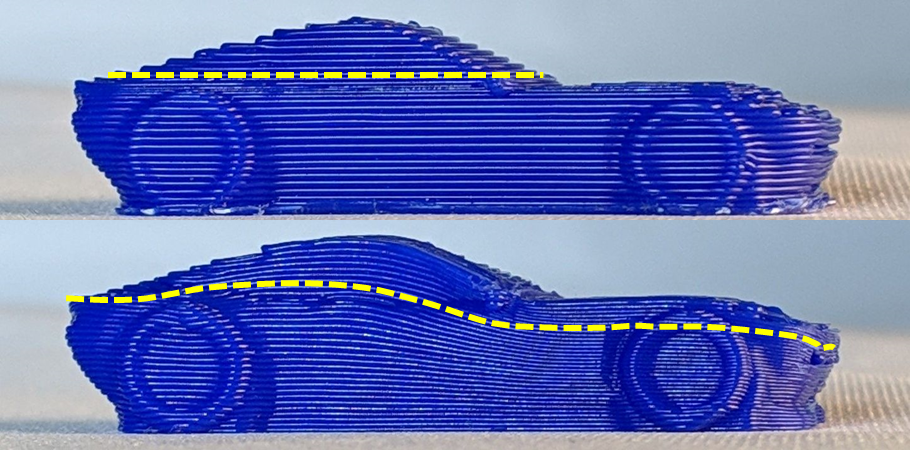Section: New Results
CurviSlicer: Slightly curved slicing for 3-axis printers
Participants : Jimmy Étienne, Nicolas Ray, Daniele Panozzo, Samuel Hornus, Charlie C.l. Wang, Jonàs Martínez, Sara Mcmains, Marc Alexa, Brian Wyvill, Sylvain Lefebvre.
Most additive manufacturing processes fabricate objects by stacking planar layers of solidified material. As a result, produced parts exhibit a so-called staircase effect, which results from sampling slanted surfaces with parallel planes. Using thinner slices reduces this effect, but it always remains visible where layers almost align with the input surfaces. In this research we exploit the ability of some additive manufacturing processes to deposit material slightly out of plane to dramatically reduce these artifacts.
We focused in particular on the widespread Fused Filament Fabrication (FFF) technology, since most printers in this category can deposit along slightly curved paths, under deposition slope and thickness constraints. Our algorithm curves the layers, making them either follow the natural slope of the input surface or on the contrary, make them intersect the surfaces at a steeper angle thereby improving the sampling quality.
Rather than directly computing curved layers, our algorithm deforms the input model before slicing it with a standard planar approach. The deformation is optimized for reproduction accuracy. We demonstrate that this approach enables us to encode all fabrication constraints, including the guarantee of generating collision-free toolpaths, in a convex optimization that can be solved using a QP solver.
This work emerged from a problem solving session between its co-authors at the 17th international Bellairs Workshop on Computational Geometry (2018). It was then pursued during 2019 in the context of the PhD thesis of Jimmy Étienne and as a collaboration with Nicolas Ray (PIXEL, Inria). The work was published in ACM Transactions on Graphics in 2019 [11] and presented at ACM SIGGRAPH 2019 by Jimmy Étienne.



